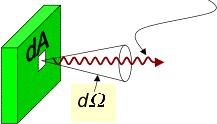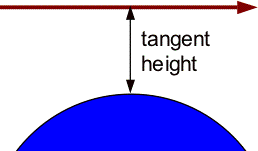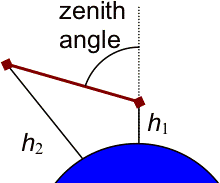
Calculation of Blackbody Radiance
What is a Blackbody?
A blackbody is a hypothetical object that absorbs all incident electromagnetic radiation while maintaining thermal equilibrium. No light is reflected from or passes through a blackbody, but radiation is emitted, and is called blackbody radiation. The prefix black is used because at room temperature such an object would emit almost no visible light, appearing black to an observer.
No physical object exactly fits this definition, but most behave at least in part as blackbodies. Calculation of the radiometric quantities associated with blackbody radiation is extremely important in physics, chemistry, optics, engineering, astronomy and many other areas.
History of blackbody theory
In 1900, Max Planck developed the modern theory describing the radiation field of a blackbody. At the time, there were two distinct models for blackbody radiation: the Rayleigh-Jeans law, which fit the measurements well at low frequencies, and Wien’s law, which worked well at high frequencies, but neither worked everywhere. Planck, by making the ingenious assumption that the energy of the modes of the electromagnetic field must be quantized, developed the theory that fits observations at all parts of the spectrum. This leap marked the birth of quantum mechanics and modern physics.
Radiometric systems of units
There are many choices of units when dealing with radiometric quantities, and each discipline has its preferred units. Spectroscopists traditionally prefer wavenumber, infrared engineers use wavelength, and physicists typically deal with frequency. Thermal calculations generally involve radiated/received power, but many systems, including the human eye, operate as efficient quantum detectors, and photon flux is the appropriate measure. The choice of units is not trivial, as the functional forms differ. For example, the power emitted per unit area of a blackbody at temperature T is proportional to T 4, but the photon flux is proportional to T 3.
References containing the basic formulas abound, but it is difficult to find any single source with formulas given in each system of units. Here we collect a comprehensive set of radiometric formulas in all the common units. We consider spectral units of frequency (Hz), wavelength (μm) and wavenumber (cm-1). For each, we derive the basic blackbody formulas in terms of both power (W) and photon flux. Beginning with the Planck blackbody function in units of W m-2 sr-1 Hz-1, all other functions are derived. We also derive useful formulas for computing integrated band radiance, and present sample C++ computer codes in Appendix A. Appendix B describes the Doppler effect on the observed blackbody radiation spectrum of moving sources. Finally, all significant formulae are summarized in Appendix C for quick reference.






